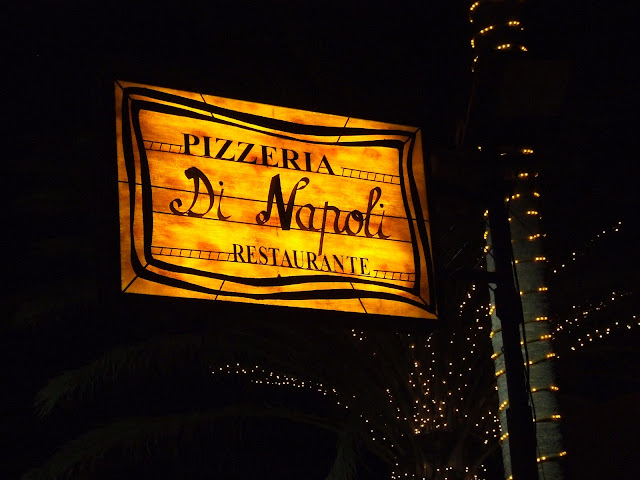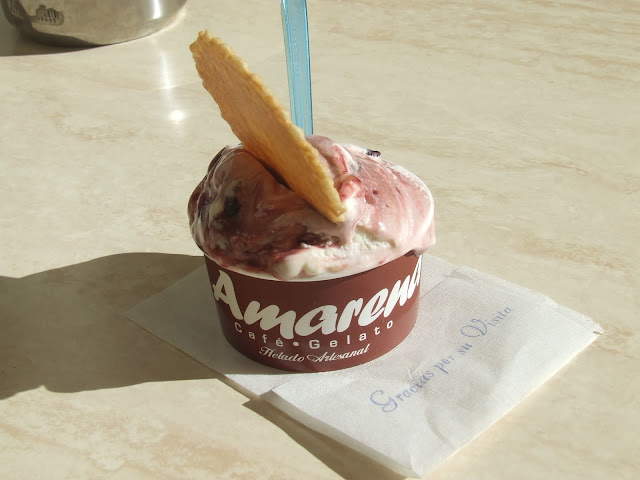- It was the first time I had travelled to anywhere on the African continent
- It was the furthest south I had ever been - and the first time I had set foot anywhere in the Southern hemisphere
- My French -which has never been above average - was rusty (to put it generously). My box of French tricks has not done any magic since my French exchange trip five years ago.
In short, the journey was a recipe for disaster, and I was acutely aware that the chances of me and my luggage both arriving in the right place at the right time were slimmer than K-Middy's waist belt.
To be honest, I don't think the enormity of what I was doing had hit me until shortly before I left, when several of my friends and family told me how brave I was for taking part in the volunteer programme, and particularly for going alone.
A tip, dear reader. If you've ever wanted to do something similar- climb Kilimanjaro perhaps, or Interrail around Europe for a couple of months, but have never quite amassed the courage, here's the trick; go ahead and book it, book it months in advance, so that you believe that by the time you actually do it, you will be prepared. By the time the departure date arrives, the chances of you being anymore prepared than you were when you booked it are slim, but you'll have spent so much money and time preparing that backing out just won't be an option.
It was this crazy school of thought which led me to be standing in the departures hall of Heathrow Terminal 4, on Halloween of all days. As I said goodbye to my dad and joined the slow-moving queue for security checks, my legs turned to jelly as I realised I was truly on my own. I was feeling slightly reassured having checked that my luggage would be transferred onto my next flight without me having to reclaim it and recheck it. I still had little faith that it was going to arrive in the right country at the right time, but at least I wouldn't be to blame.
Security proved to be my first hurdle, as I set the scanners off when I walked through. To add to my embarrassment, I was made to stand in what is best described as a pod, with my legs apart and arms out whilst a 3D scan of me was completed. Having convinced the Heathrow security staff that I was not posing a major security threat, I was allowed to shuffle off to the departure lounge, the feeling of aloneness still very much with me, and the weight of responsibility sitting firmly on my shoulders. Not wanting to destroy this illusion of responsibility by entering the Mulberry store with my debit card, I phoned a friend and had a chat. Without meaning to, or, I suspect, even realizing, he restored my belief that I was capable of pulling off thiscoup trip.
The first flight went delightfully quickly; I watched the industrious lights lights of the M25 until they disappeared through the clouds. When I next saw light emerging through the fluffy clouds, I assumed we were somewhere along the south coast of England, until I realised that the gargantuan settlement below was in fact Paris - and the very building I was looking at was the Palace of Versailles! I managed to pick out the Eiffel Tower amongst the glittering city lights too, although it was overwhelming how easily such a large, well-renowned monument was able to blend into the vast city of lights.
Halfway through the flight I realised that it was the first time I had flown with a non British/ American airline (Air France). It was somewhat unnerving not knowing what was going on; although all announcements were given in English after the French, the speaker was muffled and seemed to be merely regurgitating the English words rather than understanding the meaning behind them.
The next big challenge was navigating my way off of this plane and to the gate from which my next flight would depart. Fortunately the connecting flight area was well signposted (in English!) and after another security check (clear this time, fortunately- I don't think I could have convinced anyone of my innocence in French!) I was once again in a departure lounge. Charles de Gaulle airport is certainly very Parisienne; The Hermes store sits next to baby Burberry, with wine shops in every direction.
Next entry ("Arriving at the Lion Park")
A tip, dear reader. If you've ever wanted to do something similar- climb Kilimanjaro perhaps, or Interrail around Europe for a couple of months, but have never quite amassed the courage, here's the trick; go ahead and book it, book it months in advance, so that you believe that by the time you actually do it, you will be prepared. By the time the departure date arrives, the chances of you being anymore prepared than you were when you booked it are slim, but you'll have spent so much money and time preparing that backing out just won't be an option.
It was this crazy school of thought which led me to be standing in the departures hall of Heathrow Terminal 4, on Halloween of all days. As I said goodbye to my dad and joined the slow-moving queue for security checks, my legs turned to jelly as I realised I was truly on my own. I was feeling slightly reassured having checked that my luggage would be transferred onto my next flight without me having to reclaim it and recheck it. I still had little faith that it was going to arrive in the right country at the right time, but at least I wouldn't be to blame.
Security proved to be my first hurdle, as I set the scanners off when I walked through. To add to my embarrassment, I was made to stand in what is best described as a pod, with my legs apart and arms out whilst a 3D scan of me was completed. Having convinced the Heathrow security staff that I was not posing a major security threat, I was allowed to shuffle off to the departure lounge, the feeling of aloneness still very much with me, and the weight of responsibility sitting firmly on my shoulders. Not wanting to destroy this illusion of responsibility by entering the Mulberry store with my debit card, I phoned a friend and had a chat. Without meaning to, or, I suspect, even realizing, he restored my belief that I was capable of pulling off this
The first flight went delightfully quickly; I watched the industrious lights lights of the M25 until they disappeared through the clouds. When I next saw light emerging through the fluffy clouds, I assumed we were somewhere along the south coast of England, until I realised that the gargantuan settlement below was in fact Paris - and the very building I was looking at was the Palace of Versailles! I managed to pick out the Eiffel Tower amongst the glittering city lights too, although it was overwhelming how easily such a large, well-renowned monument was able to blend into the vast city of lights.
Halfway through the flight I realised that it was the first time I had flown with a non British/ American airline (Air France). It was somewhat unnerving not knowing what was going on; although all announcements were given in English after the French, the speaker was muffled and seemed to be merely regurgitating the English words rather than understanding the meaning behind them.
The next big challenge was navigating my way off of this plane and to the gate from which my next flight would depart. Fortunately the connecting flight area was well signposted (in English!) and after another security check (clear this time, fortunately- I don't think I could have convinced anyone of my innocence in French!) I was once again in a departure lounge. Charles de Gaulle airport is certainly very Parisienne; The Hermes store sits next to baby Burberry, with wine shops in every direction.
Next entry ("Arriving at the Lion Park")






























